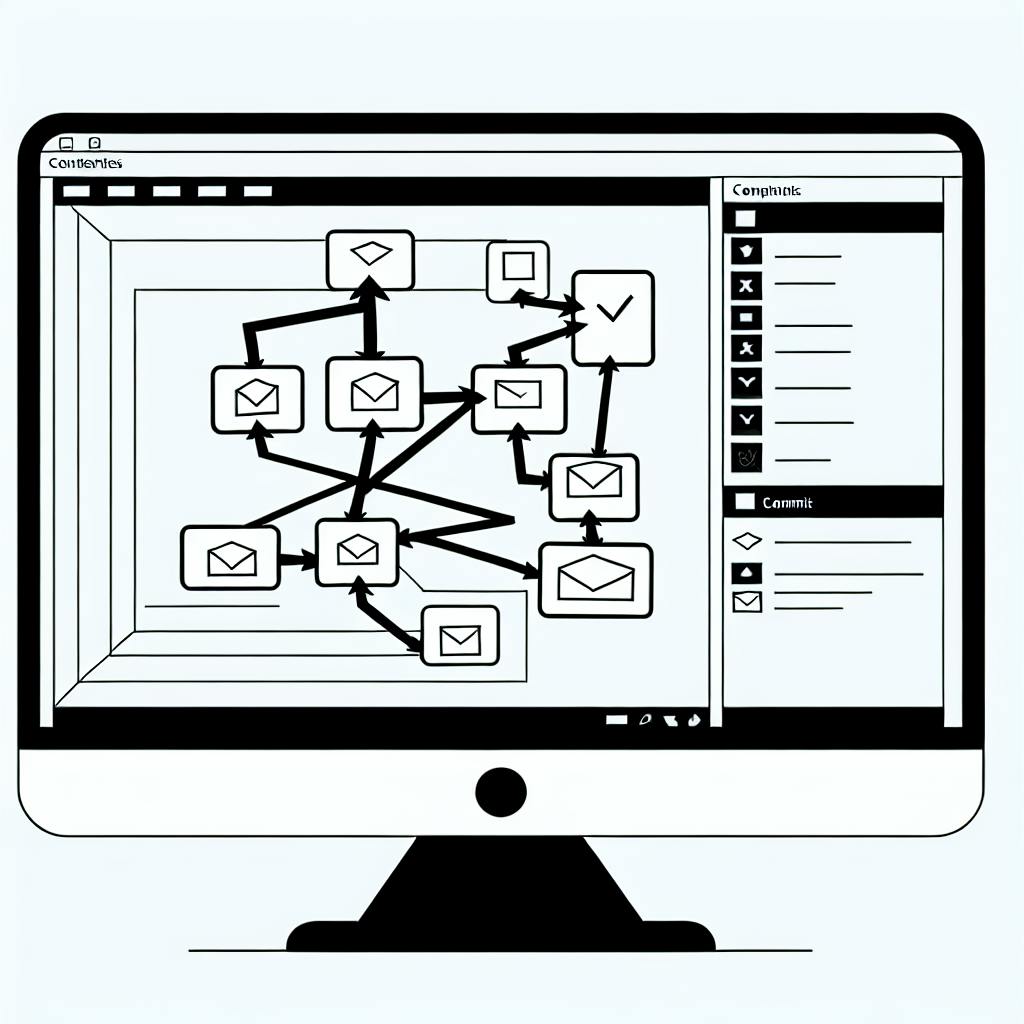Low-code development platforms have revolutionized how software applications are built, enabling developers and non-developers to create custom software with minimal coding knowledge. However, as these platforms gain popularity, concerns over intellectual property (IP) rights are growing. Who owns the code generated on these platforms? Do developers retain ownership of their creations, or do the platform providers have a stake in the IP?
This article explores the complex world of low-code IP rights, covering:
- The challenges and opportunities of low-code IP rights
- How to navigate the complexities of low-code development
- Strategies for protecting your IP rights in low-code development
By understanding the IP rights landscape in low-code development, you'll be equipped to navigate its complexities with confidence.
Key Considerations
| Consideration | Description |
|---|---|
| Software IP Rights | Copyrights, patents, trademarks, and trade secrets protect different aspects of software IP. |
| Low-Code Platform Terms | Review the terms and conditions to understand who owns the generated code. |
| Shared Code and Modifications | Determine ownership of pre-built code snippets and modifications made by developers. |
| Contracts for IP Rights Transfer | Use explicit contracts to ensure IP rights are assigned appropriately. |
| Data Ownership and Security | Identify data ownership and implement security measures for compliance. |
| Third-Party Components | Handle third-party components carefully to prevent IP rights infringement. |
| Collaboration Agreements | Establish clear agreements for IP rights and responsibilities in collaborative projects. |
| Open Source Licensing | Understand licensing terms and conditions when using open-source code. |
By following best practices and seeking legal advice when necessary, developers and businesses can protect their IP rights and maintain control over their code in the low-code ecosystem.
Ownership Challenges in Low-Code Development
Low-code development has changed the way software applications are built, but it also raises complex questions about intellectual property (IP) rights. Who owns the code generated on these platforms? Do developers retain ownership of their creations, or do the platform providers have a stake in the IP? In this section, we'll explore the intricacies of IP rights in low-code development.
Software IP Rights Explained
In software development, IP rights include:
| Type of IP Right | What it Protects |
|---|---|
| Copyrights | Original literary, dramatic, musical, and artistic works (e.g., source code) |
| Patents | Novel and non-obvious inventions (e.g., algorithms or software processes) |
| Trademarks | Brand identities |
| Trade Secrets | Confidential information (e.g., business methods or proprietary code) |
Understanding these IP rights is crucial in low-code development, as they determine who owns the code and how it can be used.
Low-Code Platform Terms and Conditions
When using low-code platforms, it's essential to review and understand the terms and conditions. These agreements often specify who owns the IP rights to the generated code. Some platforms may claim ownership, while others may grant ownership to the developer. In some cases, the terms may be ambiguous, leaving room for interpretation.
Developers must carefully review these agreements to ensure they understand their rights and obligations regarding IP ownership.
Shared Code and Modifications
Low-code platforms often provide pre-built code snippets or modules that developers can modify and integrate into their applications. This shared creation and modification of code raise questions about ownership. Who owns the original code, and who owns the modified version? Do platform providers retain ownership of their original code, or do developers acquire ownership of the modified code?
These complexities highlight the need for clear agreements and contracts that define IP ownership and rights in low-code development.
By understanding the intricacies of IP rights in low-code development, developers and businesses can better navigate the complexities of collaborative development and protect their interests. In the next section, we'll explore strategies for protecting developer and business interests in low-code development.
Protecting Developer and Business Interests
Protecting intellectual property (IP) rights is crucial in low-code development. This section will focus on strategies and legal advice for safeguarding these rights within the low-code ecosystem.
Contracts for IP Rights Transfer
When using low-code platforms, it's essential to have explicit contracts in place to ensure that IP rights of custom code developed on these platforms are assigned appropriately. These contracts should clearly outline the ownership of the code, including any modifications or updates made to the original code.
Common Issues to Avoid:
| Issue | Description |
|---|---|
| Ambiguity around code ownership | Unclear contracts can lead to disputes over IP rights |
| Unintended transfer of IP rights | Contracts may unintentionally transfer IP rights to the platform provider |
| Disputes over modifications or updates | Unclear contracts can lead to disputes over who owns modifications or updates to the original code |
By having a clear contract in place, developers and businesses can ensure that their IP rights are protected and that they have control over their code.
Data Ownership and Security
Low-code apps often generate significant amounts of data, which raises questions about data ownership and security. It's essential to identify the ownership of this data and implement security measures in compliance with data protection laws.
Key Considerations:
- Data protection laws and regulations
- Data storage and transmission security
- Access control and authorization
- Data backup and recovery procedures
By implementing robust data security measures, developers and businesses can protect sensitive data and maintain the trust of their users.
Third-Party Components and Integrations
Low-code projects often involve third-party components and integrations, which can raise concerns about IP rights infringement. It's essential to handle these integrations carefully to ensure that they don't infringe on existing IP rights.
Best Practices:
- Review licensing agreements and terms
- Ensure compliance with IP laws and regulations
- Implement measures to prevent IP rights infringement
- Document all third-party components and integrations
By taking a cautious approach to third-party components and integrations, developers and businesses can minimize the risk of IP rights infringement and protect their intellectual property.
By following these strategies and seeking legal advice when necessary, developers and businesses can protect their IP rights and maintain control over their code in the low-code ecosystem.
Collaborative Low-Code Development
Low-code development platforms have changed the way teams work together on software projects. With the ability to create custom applications without extensive coding knowledge, low-code platforms have opened up new opportunities for non-technical stakeholders to contribute to the development process. However, this collaborative approach also raises important questions about intellectual property (IP) rights and ownership.
Collaboration Agreements
When working on a low-code project with multiple collaborators, it's essential to have a clear collaboration agreement in place. This agreement should outline the IP rights of each collaborator, including who owns the code, who can modify it, and how disputes will be resolved.
| Key Elements of a Collaboration Agreement | Description |
|---|---|
| Clear definitions of IP rights and ownership | Define who owns the code and what rights each collaborator has |
| Roles and responsibilities of each collaborator | Outline the tasks and expectations for each team member |
| Procedures for modifying and updating the code | Establish a process for making changes to the code |
| Dispute resolution mechanisms | Define how conflicts will be resolved |
| Confidentiality and non-disclosure agreements | Protect sensitive information and ensure confidentiality |
By having a comprehensive collaboration agreement in place, teams can ensure that their low-code project is developed efficiently and effectively, while also protecting the IP rights of all collaborators.
Open Source and Low-Code Licensing
Low-code platforms often incorporate open-source code, which can raise questions about IP rights and licensing. When using open-source code in a low-code project, it's essential to understand the licensing terms and conditions.
| Key Considerations for Open-Source Licensing | Description |
|---|---|
| Understand the licensing terms and conditions | Review the license agreement to ensure compliance |
| Ensure compliance with licensing requirements | Follow the rules outlined in the license agreement |
| Consider the implications for IP ownership and modification | Think about how the license affects IP rights and code modifications |
| Document all open-source code used in the project | Keep a record of open-source code used in the project |
By carefully considering open-source licensing and collaboration agreements, teams can ensure that their low-code project is developed in a way that protects IP rights and promotes effective collaboration.
sbb-itb-33eb356
Real-World Examples
Low-code development projects often involve complex intellectual property (IP) rights issues. To illustrate the challenges and opportunities that arise when navigating IP rights in low-code development, let's look at some real-world examples.
IP Rights Success Stories
Case 1: Fintech Startup
A fintech startup used a low-code platform to develop a mobile banking app. The startup successfully negotiated a collaboration agreement with the low-code platform provider, which clearly outlined the IP rights of each party. As a result, the startup maintained ownership of the app's code and intellectual property, while the low-code platform provider retained ownership of its underlying technology.
Case 2: Large Enterprise
A large enterprise used a low-code platform to develop a custom CRM system. The enterprise was able to create a tailored solution that met its specific business needs, while also ensuring that it retained full ownership and control of the IP rights. This allowed the enterprise to modify and update the system as needed, without relying on the low-code platform provider.
IP Pitfalls and Conflicts
Case 1: IP Rights Dispute
A software development company used a low-code platform to develop a custom e-commerce platform for a client. However, the client later claimed ownership of the code and IP rights, citing that it had provided the requirements and specifications for the project. The dispute ultimately ended up in court, highlighting the importance of clear IP rights agreements in low-code development projects.
Case 2: Open-Source Code Infringement
A low-code platform provider was sued by a group of developers who claimed that the provider had infringed on their IP rights by using their open-source code in its platform. The dispute highlighted the need for low-code platform providers to ensure that they have the necessary licenses and permissions to use open-source code in their platforms.
These real-world examples illustrate the importance of carefully considering IP rights in low-code development projects. By understanding the complexities and challenges of IP rights in low-code development, businesses and developers can take steps to protect their IP rights and avoid costly disputes.
Best Practices for Low-Code IP Rights
To protect intellectual property (IP) rights in low-code development, follow these best practices:
Regular IP Reviews
Regularly review and update IP rights to reflect changes in the project, platform, or business. This helps identify potential issues early on and take proactive measures to address them.
Legal Expertise for Low-Code Projects
Consult with IP lawyers or experts who have experience in navigating complex IP landscapes. They can provide valuable guidance on how to protect IP rights, negotiate contracts, and avoid potential pitfalls.
Additional Best Practices
| Best Practice | Description |
|---|---|
| Document everything | Keep records of project plans, design drafts, and development stages. |
| Clear collaboration agreements | Outline IP ownership and responsibilities in collaboration agreements. |
| Review third-party agreements | Understand how third-party agreements and terms of service may impact IP rights. |
| Add copyright notices | Provide an extra layer of protection by adding copyright notices to low-code creations. |
| Seek legal advice | Consult with legal experts when necessary to ensure IP rights are protected. |
By following these best practices, developers and businesses can minimize the risk of IP disputes and maintain control over their intellectual property.
Conclusion: Clarity for Low-Code Innovation
Low-code development is rapidly changing the way software applications are built. However, the complexities of low-code licensing, platform terms, and collaborative development can lead to confusion and disputes over intellectual property (IP) ownership.
Protecting IP Rights
To ensure innovation and collaboration in low-code development, it's essential to adopt a proactive approach to managing IP rights. This includes:
- Understanding low-code licensing and platform terms
- Negotiating contracts that protect IP interests
- Following best practices for IP protection
By taking these steps, developers and businesses can minimize the risk of IP disputes and maintain control over their intellectual property.
Fostering Innovation
Clarity around IP rights is crucial for fostering a culture of innovation and collaboration in the low-code development community. By prioritizing IP protection, we can unlock the full potential of low-code development and drive innovation forward.
Remember, protecting IP rights is essential for ensuring that developers and businesses can innovate and collaborate with confidence. By adopting a proactive approach to managing IP rights, we can create a culture of innovation and collaboration that benefits everyone involved.
FAQs
What are software intellectual property rights?
Software intellectual property (IP) refers to the legal rights that protect software code or programs from unauthorized use, copying, or theft. These rights give the owner exclusive control over the software, including the right to reproduce, distribute, display, or create derivative works.
How to protect code intellectual property?
To protect your code IP, follow these steps:
| Step | Description |
|---|---|
| 1. Consult a lawyer | Clarify your rights and get legal advice on how to protect them. |
| 2. File for patents and trademarks | Register your IP to prevent others from using it without permission. |
| 3. Screen employees and contractors | Ensure they sign non-disclosure agreements before working with you. |
| 4. Use open-source licenses or collaborative agreements | Clearly define roles and responsibilities in protecting IP rights. |
By taking these steps, you can safeguard your code IP and maintain control over your software creations.


